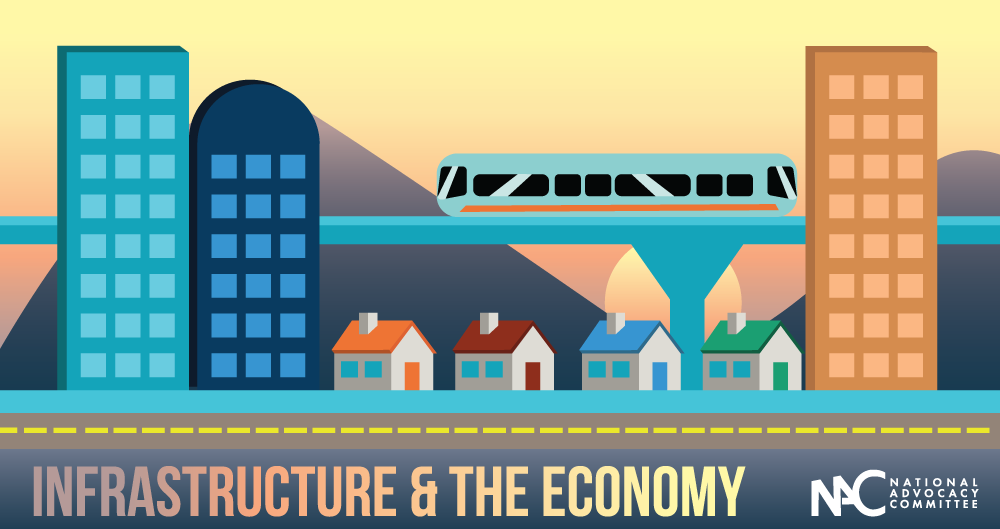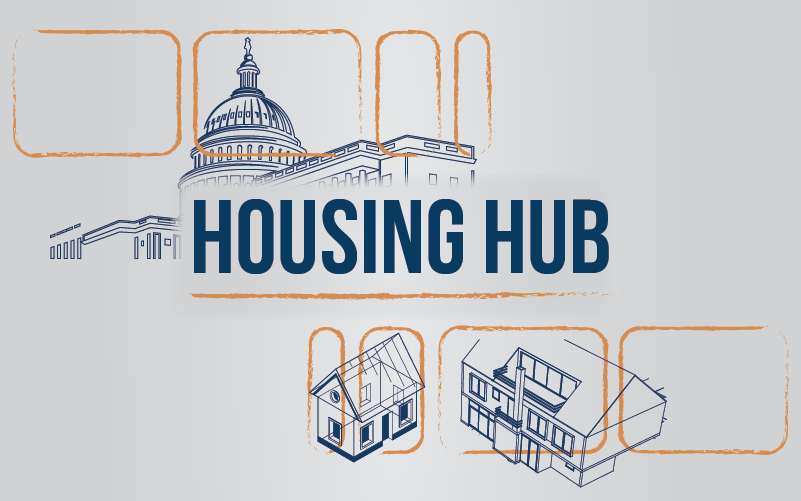It’s time to build things!
Celebrating NAHREP familia, cultura, politics, and grassroots action
Que onda mi gente?!
Infrastructure and efforts to revitalize the economy go together like arroz con frijoles. Sorry, arroz con habichuelas/candules/porotos… Did I miss any? You know what I mean. Major Infrastructure projects have long been tied to efforts from the federal government to revitalize a depressed economy. At the height of the Great Depression, President Franklin D. Roosevelt (FDR) released the New Deal when the nation reached a 24 percent unemployment rate. Half of the country’s banks failed, and the gross national product decreased by nearly half. Riots erupted across America, sometimes aimed at immigrants (like Latinos) who were accused of taking jobs from Americans. Sound familiar?
So for a little trivia, I bet you didn’t know that all of the following well-known landmarks were created thanks to the efforts of the New Deal:
- New York’s Triborough Bridge and Lincoln Tunnel
- Florida’s Overseas Highway to Key West
- (Selena’s) River Walk in San Antonio, Texas
- Hoover Dam in Clark County Nevada
- New York’s La Guardia Airport
- Arroyo Seco Parkway in Pasadena California

Infrastructure and the economy
NAHREP has been supportive of robust infrastructure legislation for one key reason: housing is a critical element of infrastructure. And one thing is for sure, housing inventory shortages have been one of the biggest barriers to Latino homeownership for the past decade.
It’s only getting worse. Last year was particularly bad for housing inventory, with the lowest homeowner vacancy rate the U.S. Census Bureau had ever seen and Zillow group reported the fewest homes on the market since they began collecting data. Plain and simple, we need more housing.
This is why we were pleasantly surprised that this week on Capitol Hill, infrastructure takes center stage. That means roads, bridges, highways and housing. A new infrastructure bill called the Moving Forward Act (they really need some help with these silly bill names) has surfaced in the U.S. House of Representatives.
The $494 billion measure has successfully made it through committee and is scheduled for a floor vote on June 30. Washington insiders believe it will likely pass in the House. But if you read these blogs, you know the dance by now. Negotiations now turn to the U.S. Senate, which has already passed its own infrastructure bill focused on building and fixing highways. The Senate’s bill did not include a housing component. The Trump Administration is also expected to release its own transportation proposal or priorities soon. I feel good about some sort of infrastructure bill passing in the near future, the question is whether or not it will include housing in its scope. That is where our advocacy work comes into play.
The House’s Moving Forward Act focuses on clean drinking water, low-income schools, the postal service, broadband, clean energy projects, among other things. However, I thought you might be interested in learning about what housing components are in the bill.
Housing elements of the Moving Forward Act
Neighborhood Homes Credit: This is the program in the bill that we’re most excited about. NAHREP has been a coalition member of the group advocating for this program for a few years now. The Neighborhood Homes Credit would establish a new federal tax credit to encourage the rehabilitation of deteriorated homes in distressed neighborhoods. These tax credits would be used to cover the gap between development costs and sales prices, up to 35 percent of eligible development costs. It is estimated that this program would lead to about 500,000 homes that would either be built or substantially rehabilitated.
Housing Trust Fund: The bill would authorize $5 billion to the National Housing Trust Fund, which supports the creation, rehabilitation, or preservation of housing that would be affordable to the lowest income households. This program is primarily focused on addressing homelessness.
Capital Magnet Fund: The bill would authorize $2.5 billion for the Capital Magnet Fund, which provides competitive grants to Community Development Financial Institutions to create and preserve affordable homes. At least 10 percent of this funding will be used for green housing investments.
Community Development Block Grant Funding for Affordable Housing and Infrastructure: The bill would authorize $10 billion for a new competitive allocation of the Community Development Block Grant (CDBG) program, which provides flexible funding to states, localities and territories for a broad range of affordable housing and community development activities. What I love about this provision is that some of the requirements and contingencies for receiving CDBG funding will be removing local barriers to affordable housing development, such as zoning requirements. Yes!
NAHREP will be keeping an eye out for developments on these negotiations and will keep you in the loop on how you can help. So much to advocate for mi gente! There’s the stimulus bill, the DACA bill and now the infrastructure bill! All eyes will be on Congress this summer. And of course, to all of the father’s out there, hope you had an amazing Dia Del Padre.

About Noerena Limón
Noerena Limón is NAHREP’s Executive Vice President of Public Policy and Industry Relations. Noerena heads the organization’s policy and advocacy efforts on issues ranging from homeownership, housing inventory, credit access and immigration.
Prior to joining NAHREP, Noerena spent six years at the Consumer Financial Protection Bureau (CFPB) and served as a political appointee under President Obama in the White House Office of Political Affairs.



